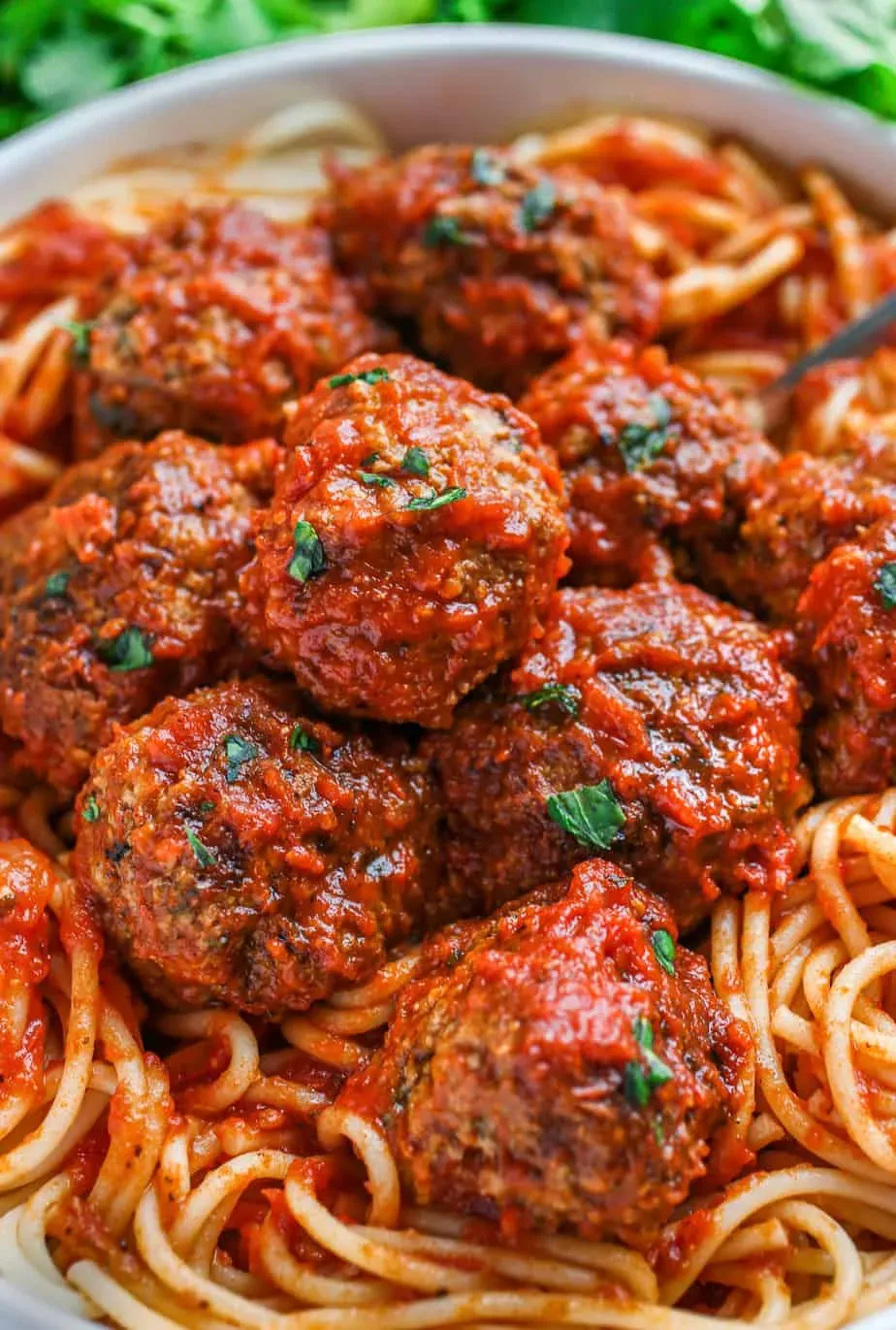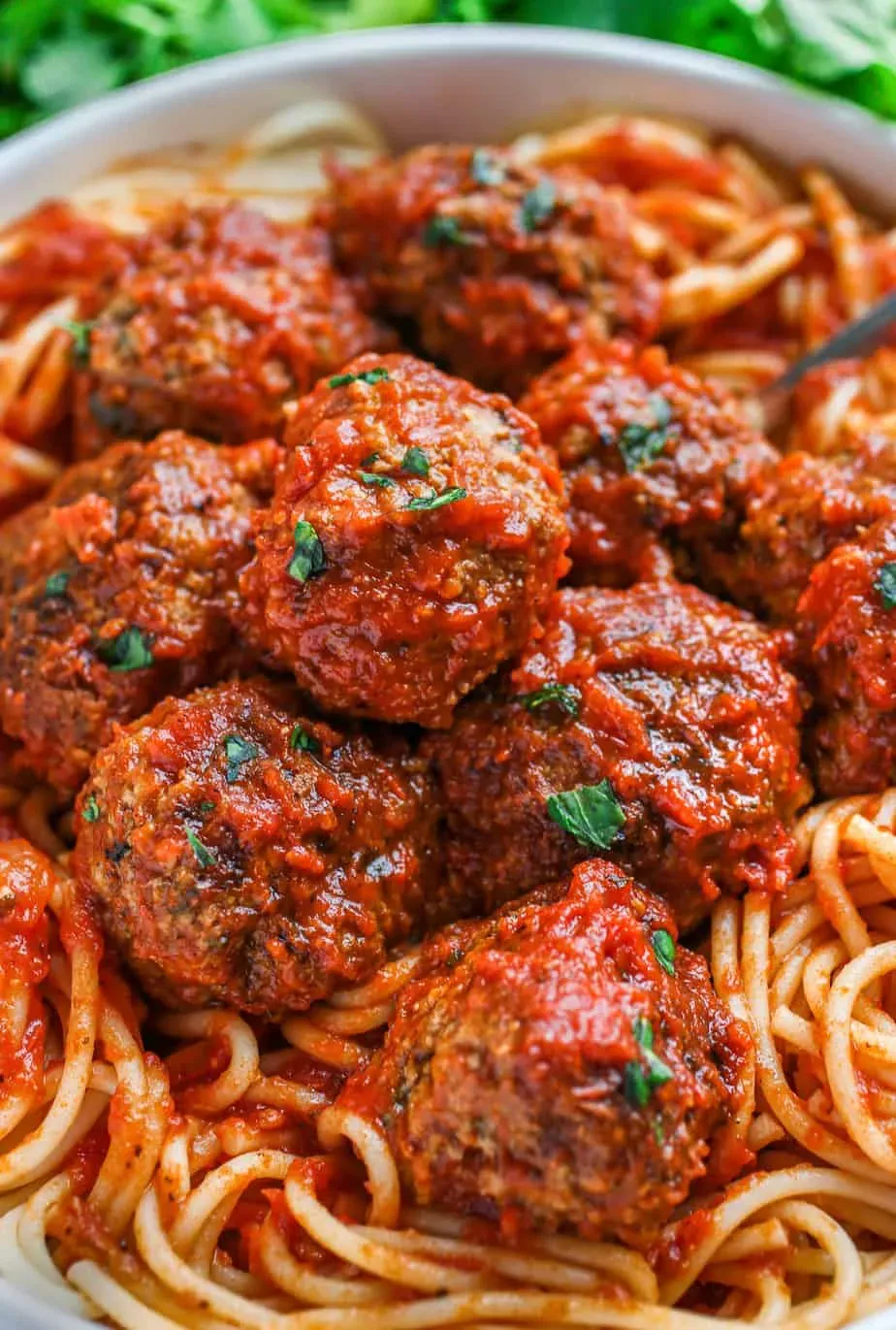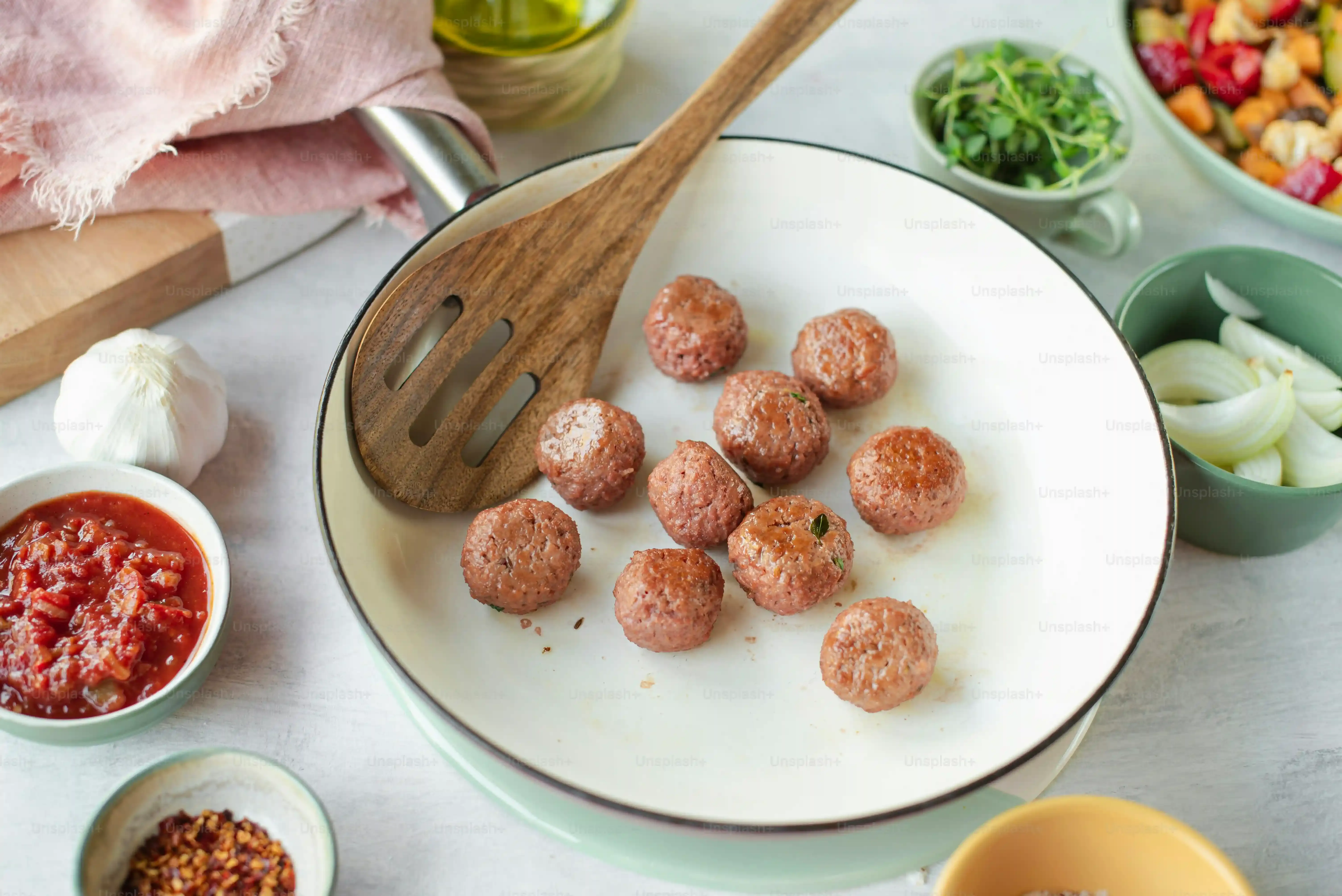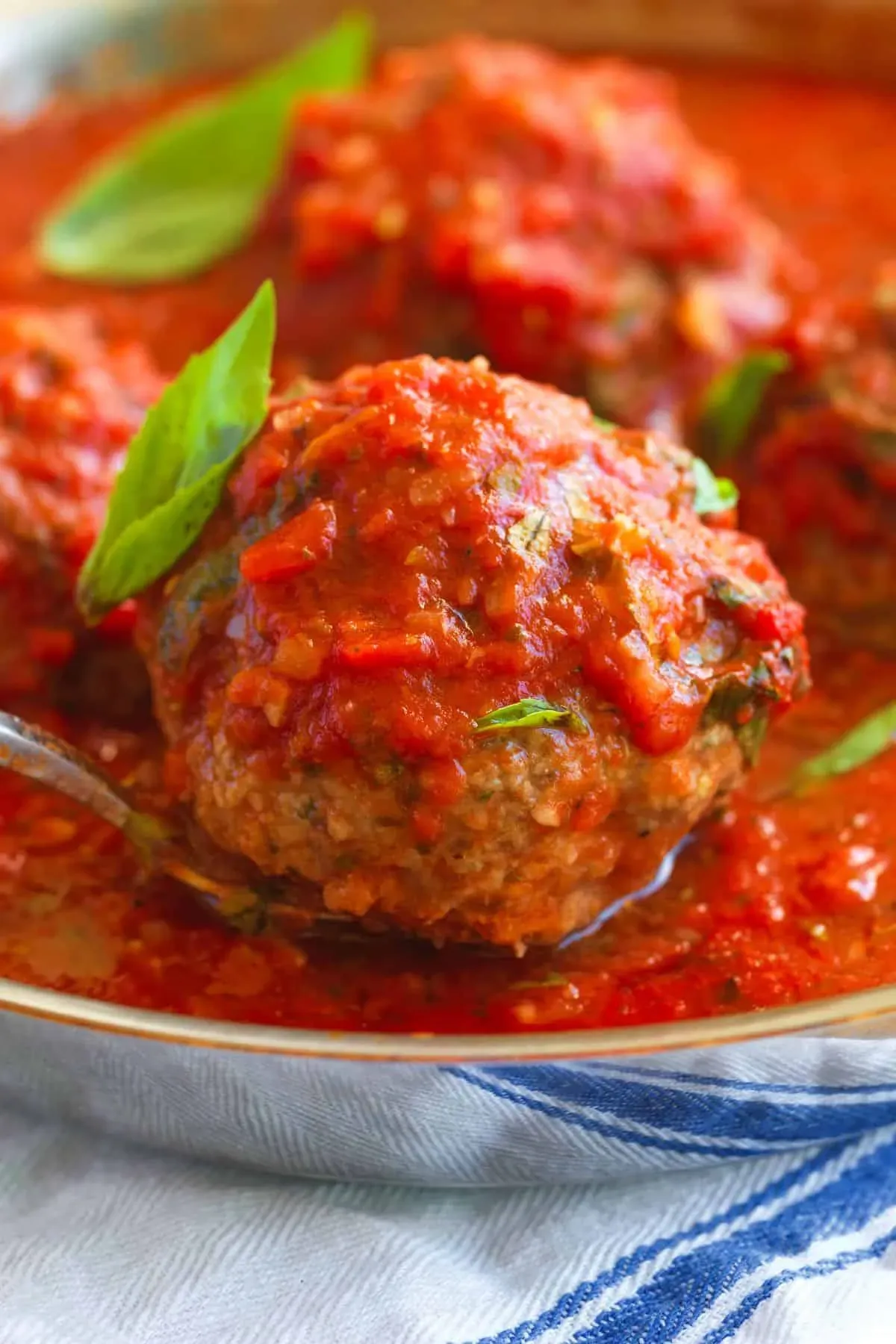Table of Contents
Let's be honest. You've probably made meatballs before. Maybe they were okay. Maybe they were dry, tough, or just... bland. The quest for the best Italian meatball recipe can feel like chasing a culinary unicorn. So many recipes promise perfection, yet deliver something closer to flavored golf balls. What’s the secret? Is it the right blend of meats? The perfect binder? Or is it something else entirely?
Why Your Meatballs Aren't Quite Right (Yet)

Why Your Meatballs Aren't Quite Right (Yet)
The Meat Foundation: More Than Just Ground Beef
You grabbed a pound of the leanest ground beef at the store, mixed it with some breadcrumbs and an egg, rolled it up, and hoped for the best. Sound familiar? That's often the first misstep on the road to sad, dry meatballs. Relying solely on super lean meat is a culinary crime against tenderness. Fat equals flavor and moisture. Without enough fat, you're fighting an uphill battle from the start, ending up with something more akin to a meat hockey puck than a tender, flavorful ball.
Beyond the fat content, the type of meat matters. A classic Italian meatball isn't a solo act for beef. It's usually a chorus of flavors. Mixing beef with pork, or even a little veal, adds layers of taste and a different texture that keeps things moist and interesting. Just dumping everything into a bowl and mixing it like you're kneading dough? Also a fast track to tough meatballs. Gentle hands are key; you're coaxing flavors together, not training them for the Olympics.
The Binder Bind and Seasoning Silence
Ah, the binder. The glue that holds the operation together. Too much dry breadcrumb and not enough liquid (like milk or broth), and you've created tiny flavor sponges that soak up moisture and leave you with a crumbly, dry mess. The binder should help keep things together and add tenderness, not turn your meatballs into sawdust. It's a delicate balance, often requiring stale bread soaked in milk, which creates a far superior texture than dry crumbs.
Then there's the seasoning. Or often, the lack thereof. Salt, pepper, garlic, onion, fresh herbs like parsley – these aren't suggestions; they're requirements. Bland meatballs are a missed opportunity. You need enough seasoning to punch through the richness of the meat and sauce. Taste a tiny cooked bit of your mixture before rolling if you're unsure. It's the only way to know if you've been brave enough with the flavor builders.
- Using only lean ground beef.
- Overmixing the meatball mixture.
- Too much dry breadcrumb, not enough liquid binder.
- Under-seasoning the mix.
- Cooking them too fast at too high a heat.
Selecting the Stars: Ingredients for the Best Italian Meatball Recipe

Selecting the Stars: Ingredients for the Best Italian Meatball Recipe
Getting the Meat Mix Just Right
Alright, let's talk meat. This is where many folks go wrong trying to nail the best Italian meatball recipe. You can't just grab the leanest ground beef on sale and call it a day. You need fat, yes, but you also need complexity. A classic blend is often a mix of beef and pork. The beef brings that familiar savory depth, while the pork adds tenderness and moisture thanks to its slightly higher fat content. Sometimes, people throw in veal for extra delicacy, but honestly, beef and pork get you 90% of the way there. Think 50/50 beef and pork, or maybe 60/40 beef dominant. Look for ground meat with a fat content around 80/20 – that 20% fat is your friend here.
The Binder: More Than Just Glue
Now for the binder. This isn't just about keeping the meatballs from falling apart; it's about texture and moisture. Dry breadcrumbs? Skip 'em. They soak up precious moisture and make your meatballs dense and sad. The secret ingredient is often stale bread (the crusty Italian kind is perfect) soaked in milk or water. Squeeze it out gently so it's moist but not soggy, then crumble it into the meat mix. This creates a light, airy structure. You also need eggs, of course, to help bind everything together, but don't go overboard. Too many eggs can make the meatballs rubbery.
- Use a mix of ground beef and pork (80/20 fat blend is good).
- Opt for stale bread soaked in milk over dry breadcrumbs.
- Include eggs, but just enough to bind, not too many.
- Freshly grated Parmesan cheese adds essential flavor.
- Don't forget the aromatic base: garlic and onion.
Flavor Builders and Secret Weapons
With the meat and binder sorted, it's time for flavor. Salt is non-negotiable. So is black pepper. Finely minced garlic and onion (or shallots) are your aromatic foundation; sautéing them gently first can soften their bite and deepen their flavor, though many swear by raw for a sharper punch. Fresh herbs like parsley are a must – they add brightness. And cheese! Freshly grated Parmigiano-Reggiano or Pecorino Romano is crucial for that salty, umami depth. Some folks add a pinch of red pepper flakes for a little heat, or a touch of nutmeg for warmth. These small additions can elevate your quest for the best Italian meatball recipe from good to unforgettable.
Mixing, Rolling, and Cooking: Techniques for the Best Italian Meatball Recipe

Mixing, Rolling, and Cooking: Techniques for the Best Italian Meatball Recipe
The Gentle Art of Mixing
So you've got your beautiful blend of meats, your soaked bread binder, and all those glorious flavor builders – the garlic, the herbs, the cheese. Now comes the crucial step: mixing. This is where many eager cooks turn their potential best Italian meatball recipe into something tough and dense. Think of the meat as a delicate cloud, not concrete mix. You want to combine everything just until it holds together. Use your hands, yes, but be gentle. Overworking the meat develops the proteins, making the meatballs rubbery. Mix until you see the ingredients just incorporated. That's it. No need to knead it like bread dough. A light touch is the mark of a seasoned meatball maker.
Shaping Up and Hitting the Heat
Once your mixture is ready (and you've maybe fried a tiny test patty to check the seasoning – highly recommended), it's time to roll. Aim for uniformity. Meatballs of similar size cook at the same rate, preventing some from drying out while others are still raw inside. A small ice cream scoop works wonders for consistent portions. Roll them gently between your palms until they're roughly the size of a golf ball, maybe slightly smaller if you prefer. Now, how to cook them? You can pan-fry them first to get a nice brown crust, adding flavor and helping them hold their shape before simmering in sauce. Or, you can bake them on a rack over a baking sheet; this is less messy and still gives them a good start before their bath in marinara. Some purists drop them raw directly into a simmering sauce, letting them cook through and flavor the sauce simultaneously. Each method has its merits, but don't skip the cooking step before they hit the sauce; it builds a better meatball.
- Mix ingredients gently until just combined to avoid tough meatballs.
- Fry a small test patty to adjust seasoning before rolling the batch.
- Use a scoop or your hands to roll uniformly sized meatballs for even cooking.
- Choose your initial cooking method: pan-fry for crust, bake for less mess, or simmer raw in sauce for maximum sauce flavor infusion.
- Handle the mixture lightly throughout the process.
Serving Up Your Best Italian Meatball Recipe
Serving Up Your Best Italian Meatball Recipe
You've put in the work: selecting the right meats, mastering the gentle mix, and cooking them to perfection. Now comes the moment of truth: serving up your best Italian meatball recipe. Don't just dump them on a plate with sauce. Think about the presentation. Are they going into a classic spaghetti and meatballs situation? Ladle that sauce generously over the pasta, then nestle the meatballs on top, perhaps with a little extra sauce spooned over them. A final flourish of freshly grated Parmesan cheese and a sprinkle of chopped fresh parsley isn't optional; it's essential. If you're serving them as an appetizer, perhaps in a smaller dish with toothpicks, make sure there's plenty of sauce for dipping. The sauce is the meatballs' best friend, and they deserve to be swimming in it, not merely coated. The goal is a dish that looks as inviting as it smells, promising comfort and deep flavor.
What's your go-to pasta shape for meatballs? Is it classic spaghetti, sturdy rigatoni, or something else entirely?
Troubleshooting Common Meatball Mishaps
Even with the best intentions and ingredients for the best Italian meatball recipe, things can occasionally go sideways. Dry meatballs? This is probably the most common complaint. It usually boils down to too little fat in your meat mix, overmixing the ingredients (which makes them tough and dry), or not enough moisture from your binder. Remember that soaked bread? That's your defense against dryness. If you find your mixture feels a bit dry before rolling, don't be afraid to add another splash of milk or even a little extra egg yolk.
Meatballs falling apart in the sauce? This often means your binder wasn't strong enough, or you didn't cook them slightly before adding them to the sauce. Pan-frying or baking them first helps them hold their shape. If they're already in the sauce and disintegrating, there's not much you can do but embrace a more rustic, saucy meat dish. Next time, check your binder ratio – enough soaked bread and egg is key.
- **Dry Meatballs:** Check meat fat content (aim for 80/20), avoid overmixing, ensure binder is moist enough (use soaked bread).
- **Meatballs Falling Apart:** Strengthen binder (more soaked bread/egg), consider pre-cooking before simmering in sauce.
- **Rubbery Texture:** Likely due to overmixing the meat or adding too many eggs.
- **Bland Flavor:** Increase seasoning (salt, pepper, garlic, herbs, cheese). Taste a test patty!
- **Uneven Cooking:** Roll meatballs to a consistent size.
Troubleshooting Common Meatball Mishaps

Troubleshooting Common Meatball Mishaps
Why Your Meatballs Lack That Italian Punch
You followed the recipe, used the right meat blend, but something's missing. That deep, savory flavor you crave from the best Italian meatball recipe just isn't there. Often, the culprit is timid seasoning. Salt is a flavor amplifier; without enough, everything tastes flat. But it's more than just salt. Did you use fresh garlic, or that jarred stuff? Jarred garlic is convenient, sure, but it lacks the pungent bite and complex aroma of fresh. Did you add enough cheese? Parmigiano-Reggiano or Pecorino Romano aren't just fillers; they bring crucial umami and saltiness. Don't be shy with the herbs either – fresh parsley is non-negotiable for brightness. If your mixture tastes a little bland before cooking (fry a tiny bit to check!), you need to go back and add more of these flavor foundations. It's better to adjust before they hit the heat than regret it later.
Battling the Rubber Ball Syndrome
You bite into your meatball, expecting tender deliciousness, and instead, your teeth meet resistance. It's rubbery. A common, frustrating problem when aiming for the best Italian meatball recipe. This usually stems from one major error: overmixing. Think about making bread dough; you knead it vigorously to develop gluten, which gives bread its structure. You absolutely do *not* want to do that with meatballs. The more you mix and compress the meat, the tougher it becomes. Use a light hand. Mix just until the ingredients are combined. Another potential cause? Too many eggs. Eggs are a binder, but in excess, they can contribute to a bouncy, rubbery texture. Stick to the recommended amount and focus on that gentle mixing technique. Your goal is a loosely packed ball, not a dense sphere built to withstand a fall from orbit.
Ever wonder why some meatballs are light and tender, while others feel like edible bouncy balls?
Your Meatball Mastery Awaits
So there you have it. Crafting the best Italian meatball recipe isn't some ancient, unattainable art form. It's about paying attention to the details: the quality of your ingredients, how you handle the mixture, and the cooking method you choose. They won't magically become perfect just by wishing. You've got the tools now. Go forth and make some meatballs worth talking about. And maybe, just maybe, stop settling for those sad, dry imposters.